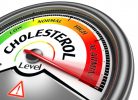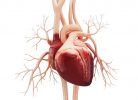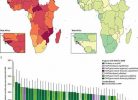Rapid COVID-19 Tests Show Low Rate of False Positives
Editor’s note: Find the latest COVID-19 news and guidance in Medscape’s Coronavirus Resource Center.
The rate of false positive results from rapid antigen test screens for COVID-19 in the workplace setting was 0.05%, based on data from approximately 900,000 tests.
“Concerns have been raised whether rapid antigen tests for SARS-CoV-2 can result in false-positive test results and undermine pandemic management for COVID-19,” but data from large samples are lacking, writes Joshua S. Gans, PhD, of the University of Toronto, Canada, and colleagues.
In a study published in the Journal of the American Medical Association, the researchers analyzed results from 903,408 rapid antigen tests conducted for 537 workplaces between January 2021 and October 2021. The tests were used to serially screen asymptomatic workers in various workplaces in Canada. Participation was voluntary, and participants were screened twice weekly.
Recorded results of the screening tests included a de-identified record identifier, the place of employment, the test, and sometimes the lot number, which was available for approximately two thirds of the tests.
In the event of a positive test, the individual was referred for a polymerase chain reaction (PCR) test to be completed within 24 hours.
“A false-positive result was defined as a positive screen on a rapid antigen test and a subsequent negative confirmatory PCR,” and false-positive results were matched to the test manufacturer and the lot number if available.
Overall, the researchers found 1322 positive results (0.15%). Of these, 1103 had PCR information, and 42% of the positive tests were confirmed by PCR. Lot numbers were available for approximately two thirds of the rests.
Notably, 60% of the false positives occurred in two workplaces run by different companies between September 25 and October 8. The workplaces were 675 km (421 miles) apart. All false-positive tests from these locations were drawn from the same batch of tests: Abbott’s Panbio COVID-19 Ag Rapid Test Device.
“The cluster of false-positive results from one batch was likely the result of manufacturing issues rather than implementation,” the researchers note.
The researchers also highlighted the importance of thorough data collection to quickly identify test quality problems and other issues. “With the ability to identify batch issues within 24 hours, workers could return to work, problematic test batches could be discarded, and the public health authorities and manufacturer could be informed,” they emphasize. Other causes of false positives include testing either too early or too late in the infectious stage and quality issues in the self-administration of the tests, they added.
The study findings were limited by several factors, including the use of a convenience sample of workplaces, the incomplete reporting of PCR confirmation results, and the lack of identification of lot numbers for approximately one third of the tests, the researchers write. They also noted that the results reflected the Canadian COVID-19 epidemiology during the study period and may not be generalizable to other countries and time periods.
However, the overall low rate of false-positive results for screening tests reflects data from previous smaller studies, and the results of the current study can inform discussions of the risk that too many false positive rapid tests would overwhelm PCR testing capacity, the researchers concluded.
Expert Shares Guidance for Rapid Testing
“I’m not surprised by the current study’s findings,” said Robert Glatter, MD, of Lenox Hill Hospital, New York City, and editor-at-large for Medscape Emergency Medicine. “The study backs up what we already know: the chance of a false-positive is exceedingly low when performing rapid tests,” he said. “If anything, you would expect a false negative if you sample too soon after exposure or before symptoms develop. In a nutshell, if you test positive on a rapid test, you can place a high degree of confidence in the result,” Glatter emphasized.
“Rapid tests are a reliable indicator of infectiousness, which typically peaks about 1 day before symptom onset and then drops off within 1 week of symptom onset,” Glatter explained. It’s important to remember that rapid tests pick up viral proteins that are replicating in the nasal passages. These tests are quite specific for measuring one’s degree of infectiousness and ability to transmit the virus to others, he added.
“We also know that PCR tests, highly sensitive tests that are able find small bits of viral genetic material, can detect ‘dead’ virus, meaning a virus that is not able to replicate, but that can produce a positive result for many weeks after recovery, although the individual undergoing testing is not infectious,” Glatter said.
The Centers for Disease Control and Prevention now acknowledges that the period of COVID-19 infectiousness extends beyond 5 days, “but they are placing their faith in people wearing masks to reduce and prevent transmission from days 5-10,” said Glatter.
The clinical takeaways, according to Glatter, are that if an individual has symptoms, takes a rapid test, and tests positive, they can trust the result. “However, the presence of symptoms doesn’t mean you are necessarily infectious, since you can be infectious without having symptoms. In fact, 30%-40% of cases are asymptomatic,” Glatter noted. “The relationship between having symptoms and being infectious is not always clear cut. What we know based on Omicron is that symptom onset may in fact occur before infectiousness develops,” he added.
For those with negative rapid test results who remain asymptomatic, but had a recent exposure (in the past 5-7 days), the rapid test “may be falsely negative, and you should re-test in 2 days, while remaining in quarantine,” Glatter advised. “If you are on day 6-7 of isolation, are asymptomatic, but see a faint red line in your rapid test, you are still infectious, and can therefore transmit the virus,” he emphasized. In that case, “re-test in 1-2 days, remain in isolation, and continue to wear a mask,” he said.
Glatter added that the intensity of the red line on rapid tests correlates with infectiousness, and therefore with the degree of viral replication, which indicates an individual’s ability to transmit the virus to others.
“Manufacturing or batch issues are typically the explanation for false-positive tests, as opposed to implementation issues,” said Glatter. “Other than batch issues, false positives can occur as a result of when the test is administered, either too early or too late in the stage of infection, or the result of mechanics, or how the test was self-administered,” he said. “In general, employers can trust the accuracy of rapid tests when used as a measure for safe return to the workplace after a positive test or exposure,” he noted.
Glatter also advised that “healthcare workers who remain asymptomatic, and have a negative rapid test — after a recent prior positive test or exposure in the last 7-10 days (without the need for fever reducing medications in the past 24 hours) — can safely resume work in the healthcare setting.”
Individuals “who continue to have minimal symptoms but otherwise feel well (without fever after a positive test or exposure in the past 7-10 days) but continue to have negative rapid tests in isolation, are considered low risk and may return to work, provided they use recommended PPE,” he added.
The study received no outside funding. The researchers and Glatter have disclosed no relevant financial relationships .
JAMA. Published online January 7, 2022. Research Letter
Heidi Splete is a freelance medical journalist with 20 years of experience.
For more news, follow Medscape on Facebook, Twitter, Instagram, YouTube, and LinkedIn
Source: Read Full Article


